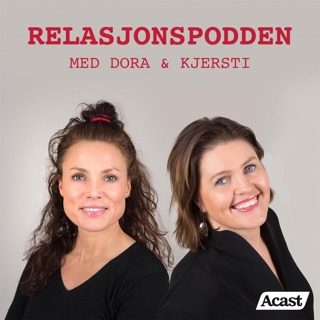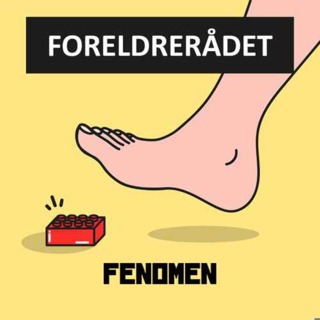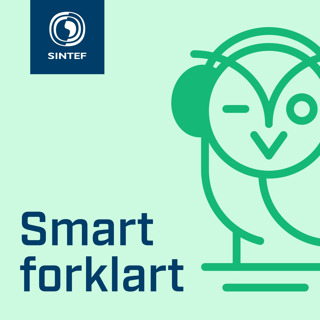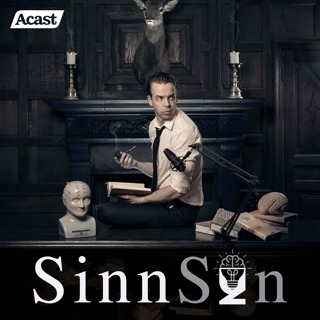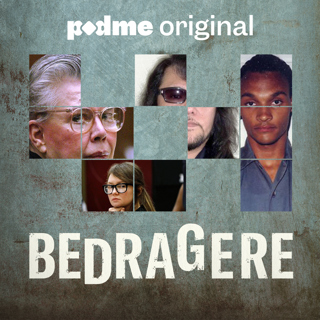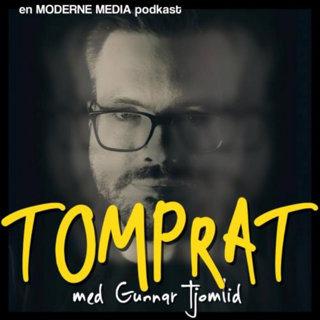
ABA Inside Track Bloopers, Vol. I
Subscribe on iTunes Subscribe on Google Play Subscribe on Stitcher Recorded with warmed-over outtakes and while my kids were taking a nap after too much Christmas merriment, it's ABA Inside Track's first (annual?) blooper episode. Relieve a whole bunch of garbage I deleted from our professional, full-length episodes and saved so I could cobble together this year-end capper. Please very much enjoy!
28 Des 201614min

Happy Holidays from ABA Inside Track
With the year coming to a close, we thought we'd put out a quick video wishing all of our listeners, friends, and colleagues a happy holidays and a restful start to the new year. And by quick, I mean we made my brother film us during his holiday party before we put all the kids to bed. Also, stay tuned to the whole episode for some big news about one of our hosts. Could Rob be getting his PhD? Could Diana be starting her own line of baby-wear? Could Jackie be moving to Canada to star in a toy-based TV show? Grab a glass of egg nog, sit by the fire with your headphones on, and listen to our heartfelt thanks for your continued support.
21 Des 20163min

Episode 21 - The Good Behavior Game
Subscribe on iTunes Subscribe on Google Play Subscribe on Stitcher Back from the Summer of '69, it's the Good Behavior Game! We debunk the rumors that the benefits of this classic group contingency is all hype--it totally works--and rattle off a whole bunch of replications in addition to reviewing the original article that started the craze for this behavioral vaccine. Then, finally, the wait is over as we crown the worst classroom ever described in research. That teacher could only wish that her biggest problem was tardy Sailor Moon fans or a zombie apocalypse. Plus, Rob has a good idea, maybe. Articles discussed this episode: Barrish, H.H., Saunders, M., & Wolf, M.M. (1969). Good Behavior Game: Effects of individual contingencies for group consequences on disruptive behavior in a classroom. Journal of Applied Behavior Analysis, 2, 119-124. doi: 10.1901/jaba.1969.2-119 Donaldson, J.M., Vollmer, T.R., Krous, T., Downs, S., & Berard, K.P. (2011). An evaluation of the Good Behavior Game in kindergarten classrooms. Journal of Applied Behavior Analysis, 44, 605-609. doi: 10.1901/jaba.2011.44-605 Tingstrom, D.H., Sterling-Turner, H.E., & Wilczynski, S.M. (2006). The Good Behavior Game: 1969-2002. Behavior Modification, 30, 225-253. doi: 10.1177/0145445503261165 If you're interested in ordering CEs for listening to this episode, click here to go to the store page. You'll need to enter your name, BCBA #, and the two episode secret code words to complete the purchase. Email us at abainsidetrack@gmail.com for further assistance.
14 Des 20161h 6min

Episode 21 Preview
Subscribe on iTunes Subscribe on Google Play Subscribe on Stitcher Coming back into the public consciousness, it's the Good Behavior Game! Next week, we'll review the original 1969 article describing this amazing classroom management system as well as some more recent research into its utility. But first: errata, Rob in a captain's hat, and the musical stylings of the Inside Track crew. See you next week for the full-length discussion. Articles for next week: Barrish, H.H., Saunders, M., & Wolf, M.M. (1969). Good Behavior Game: Effects of individual contingencies for group consequences on disruptive behavior in a classroom. Journal of Applied Behavior Analysis, 2, 119-124. doi: 10.1901/jaba.1969.2-119 Donaldson, J.M., Vollmer, T.R., Krous, T., Downs, S., & Berard, K.P. (2011). An evaluation of the Good Behavior Game in kindergarten classrooms. Journal of Applied Behavior Analysis, 44, 605-609. doi: 10.1901/jaba.2011.44-605 Tingstrom, D.H., Sterling-Turner, H.E., & Wilczynski, S.M. (2006). The Good Behavior Game: 1969-2002. Behavior Modification, 30, 225-253. doi: 10.1177/0145445503261165
7 Des 201614min

Episode 20 - Noncontingent Reinforcement
Subscribe on iTunes Subscribe on Google Play Subscribe on Stitcher Because noncontingent reinforcement goes beyond constant access to a bag of M+Ms, we bring you this, the latest episode of ABA Inside Track. Jackie and Rob are ready to meet your response-independent schedule needs, especially if those needs include a synopsis of the Hugga Bunch movie. Diana reviews NCR schedules, from dense to lean and everything in between, though expresses a preference for dense when candy is involved. Finally, a heated discussion ensues regarding extinction as a ruiner of contingency marriages. Listen closely: this episode is chock-full of putative possibilities. Articles discussed this episode: Hagopian, L.P., Fisher, W.W., & Legacy, S.M. (1994). Schedule effects of noncontingent reinforcement on attention-maintained destructive behavior in identical quadruplets. Journal of Applied Behavior Analysis, 27, 317-325. doi: 10.1901/jaba.1994.27-317 Wallce, M.D., Iwata, B.A., Hanley, G.P., Thompson, R.H., & Roscoe, E.M. (2012). Noncontingent reinforcement: A further examination of schedule effects during treatment. Journal of Applied Behavior Analysis, 45, 709-719. doi: 10.1901/jaba.2012.45-709 If you're interested in ordering CEs for listening to this episode, click here to go to the store page. You'll need to enter your name, BCBA #, and the two episode secret code words to complete the purchase. Email us at abainsidetrack@gmail.com for further assistance.
30 Nov 20161h 11min

Episode 20 Preview
Subscribe on iTunes Subscribe on Google Play Subscribe on Stitcher Next week, we're talking about the somewhat misunderstood treatment: non-contingent reinforcement. And before we even get into the topic, Jackie gets belligerent. So you know it'll be a good episode. Then, in errata, we review updates to the professional and ethical compliance code for behavior analysts in relation to reporting public health- and safety-related fines or tickets to the BACB. Let's hope none of our hypothetical scenarios every come to pass! Articles for next week: Hagopian, L.P., Fisher, W.W., & Legacy, S.M. (1994). Schedule effects of noncontingent reinforcement on attention-maintained destructive behavior in identical quadruplets. Journal of Applied Behavior Analysis, 27, 317-325. doi: 10.1901/jaba.1994.27-317 Wallce, M.D., Iwata, B.A., Hanley, G.P., Thompson, R.H., & Roscoe, E.M. (2012). Noncontingent reinforcement: A further examination of schedule effects during treatment. Journal of Applied Behavior Analysis, 45, 709-719. doi: 10.1901/jaba.2012.45-709
23 Nov 201612min

Episode 19 - Parent Training to Decrease Challenging Behavior
Subscribe on iTunes Subscribe on Google Play Subscribe on Stitcher Everyone needs help sometimes whether it's a family dealing with challenging behavior or podcast hosts avoiding nonsensical tangents. This week's episode spends most of it's running time with the former, reviewing research on how to help behavior analysts to help parents in the home. From tantrums in quadruplets to overcoming mealtime woes, we've got something for even the smartest parents and practitioners to learn. In regards to the latter--with Rob getting in character with his Fran Drescher nanny impression, Jackie bringing up fishing and Beyonce, and Diana comparing research to delicious gravy--we may have been less successful. Articles discussed this episode: Miles, N.I. & Wilder, D.A. (2009). The effects of behavioral skills training on caregiver implementation of guided compliance. Journal of Applied Behavior Analysis, 42, 405-410. doi: 10.1901/jaba.2009.42-405 Crone, R.M. & Mehta, S.S. (2016). Parent training on generalized use of behavior analytic strategies for decreasing the problem behavior of children with autism spectrum disorder: A data-based case study. Education and Treatment of Children, 39, 64-94. Stocco, C.S. & Thompson, R.H. (2015). Contingency analysis of caregiver behavior: Implications for parent training and future directions. Journal of Applied Behavior Analysis, 48, 417-435. doi: 10.1002/jaba.206 If you're interested in ordering CEs for listening to this episode, click here to go to the store page. You'll need to enter your name, BCBA #, and the two episode secret code words to complete the purchase. Email us at abainsidetrack@gmail.com for further assistance.
16 Nov 20161h 5min

Episode 19 Preview
Subscribe on iTunes Subscribe on Google Play Subscribe on Stitcher We're back with another preview episode to prepare for a full-length discussion on helping parents learn to respond to challenging behavior. But first, we get a bit ABA OFF-track as Rob recounts the time he almost met Neil Gaiman, Diana shares some recent Facebook links with the crowd, and Jackie recounts our BABAT rock star moment. And speaking of which, if you haven't listened to our BABAT special, please do so, if not for our sunny voices than for all of the cool movie music Rob edited in there. Articles for next week: Miles, N.I. & Wilder, D.A. (2009). The effects of behavioral skills training on caregiver implementation of guided compliance. Journal of Applied Behavior Analysis, 42, 405-410. doi: 10.1901/jaba.2009.42-405 Crone, R.M. & Mehta, S.S. (2016). Parent training on generalized use of behavior analytic strategies for decreasing the problem behavior of children with autism spectrum disorder: A data-based case study. Education and Treatment of Children, 39, 64-94. Stocco, C.S. & Thompson, R.H. (2015). Contingency analysis of caregiver behavior: Implications for parent training and future directions. Journal of Applied Behavior Analysis, 48, 417-435. doi: 10.1002/jaba.206
9 Nov 201617min





